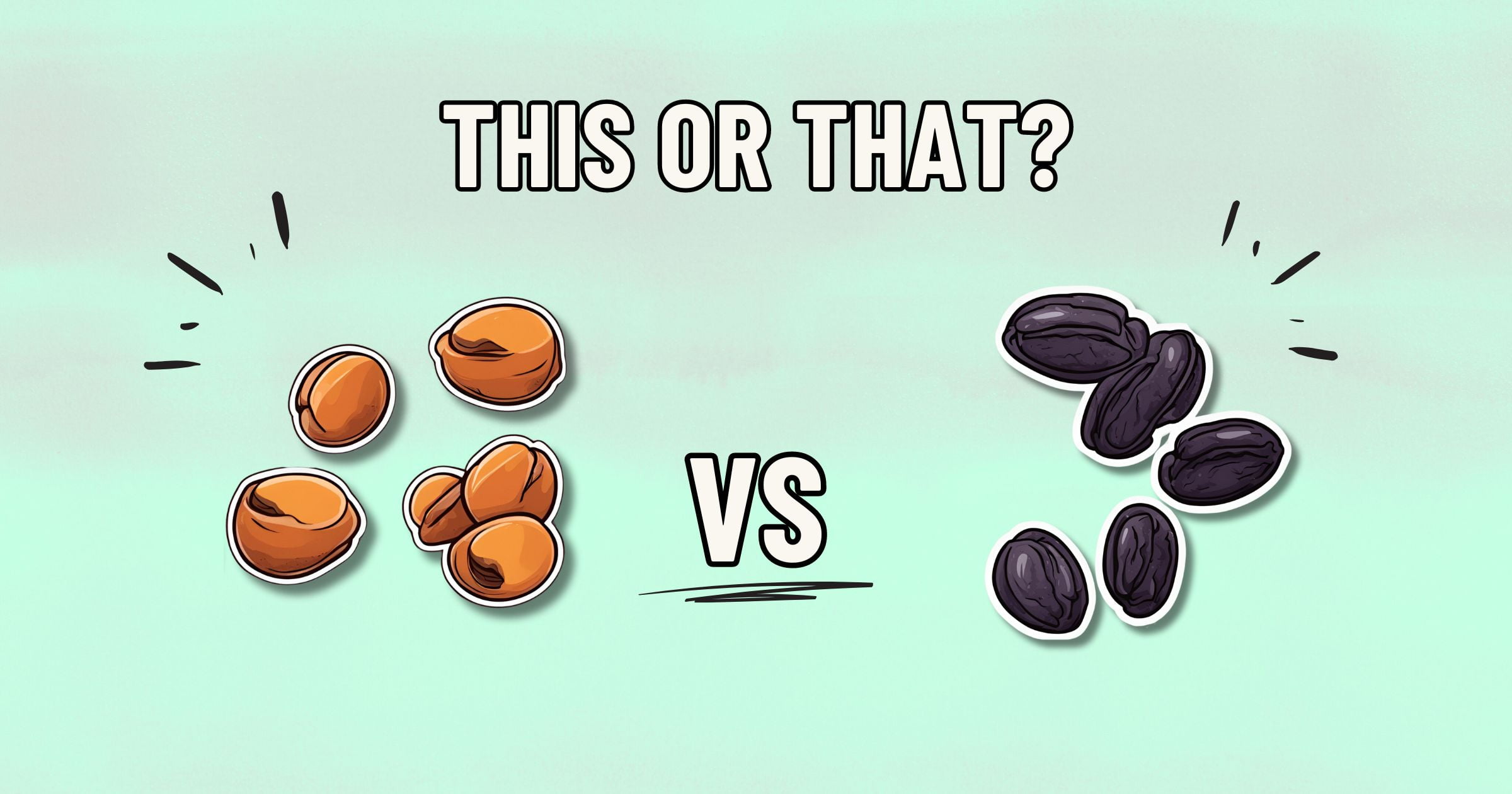Dried Apricots vs Dried Prunes – Which is Healthier?
Dried apricots vs. prunes: our verdict is in! Prunes deliver a nutrient-packed punch with 3x the fiber and essential vitamins over apricots.

Our Verdict
When comparing dried apricots to dried prunes, we picked the prunes.
Why?
First, let’s talk hydration. We’ve described both of these as “dried”, but prunes are by default dried plums, usually partially rehydrated. So, for fairness, on the other side of things we’re also looking at dried apricots, partially rehydrated. Otherwise, it would look (mass for mass or volume for volume) like one is seriously outstripping the other even if some metric were actually equal, just because of water-weight in one and not the other.
Illustrative example: consider, for example, that the sugar in a bunch of grapes or a handful of raisins can be the same, not because they magically got more sugary, but because the water was dried out, so per mass and per volume, there’s more sugar, proportionally.
Back to dried apricots and dried prunes…
You’ll often see these two next to each other in the heath food store, which is why we’re comparing them here.
Of course, if it is practical, please by all means enjoy fresh apricots and fresh plums. But we know that life is not always convenient, fruits are not in season growing in abundance in our gardens all year round, and sometimes we’re stood in the aisle of a grocery store, weighing up the dried fruit options.
- Apricots are well-known for their zinc, potassium, and vitamin A.
- Prunes are well-known for their fiber.
But that’s not the whole story…
- Apricots outperform prunes for vitamin A, and also vitamins C and E.
- Prunes take first place for vitamins B1, B2, B3, B5, B6, and K, and also for minerals calcium, copper, iron, magnesium, manganese, phosphorus, potassium, sodium, and zinc.
- Prunes also have about 3x the fiber, which at the very least offsets the fact that they have 3x the sugar.
Once again, sugar in fruit is healthy (sugar in fruit juices is not*, though, so enjoy prunes rather than just prune juice, if you can) and can take its rightful place as providing a significant portion of our daily energy needs, if we let it.
*It’s the same sugar, just the manner of delivery changes what it does to our liver and our pancreas; see:
Which Sugars Are Healthier, And Which Are Just The Same?
In summary…
Dried apricots are great (fresh are even better), and yet prunes outperform them by most metrics on a like-for-like basis.
Prunes have, on balance, a lot more vitamins and minerals, as well as more fiber and energy.
Want to get some?
Your local supermarket probably has them, and if you prefer having them delivered to your door, then here’s an example product on Amazon 😎
Enjoy!
Share This Post
Learn To Grow
Sign up for weekly gardening tips, product reviews and discounts.




